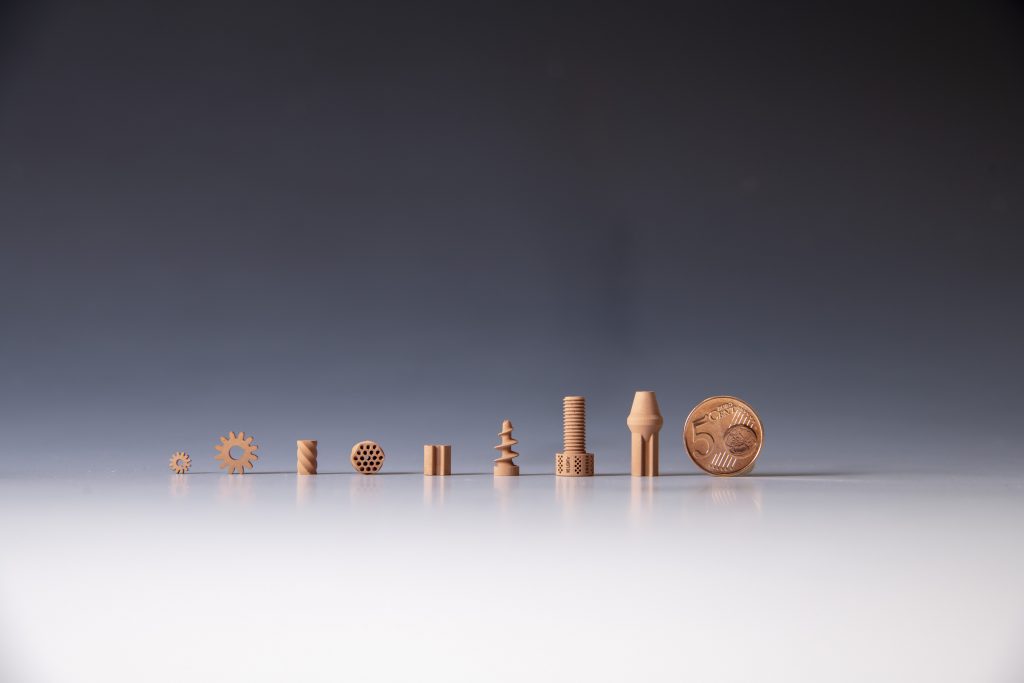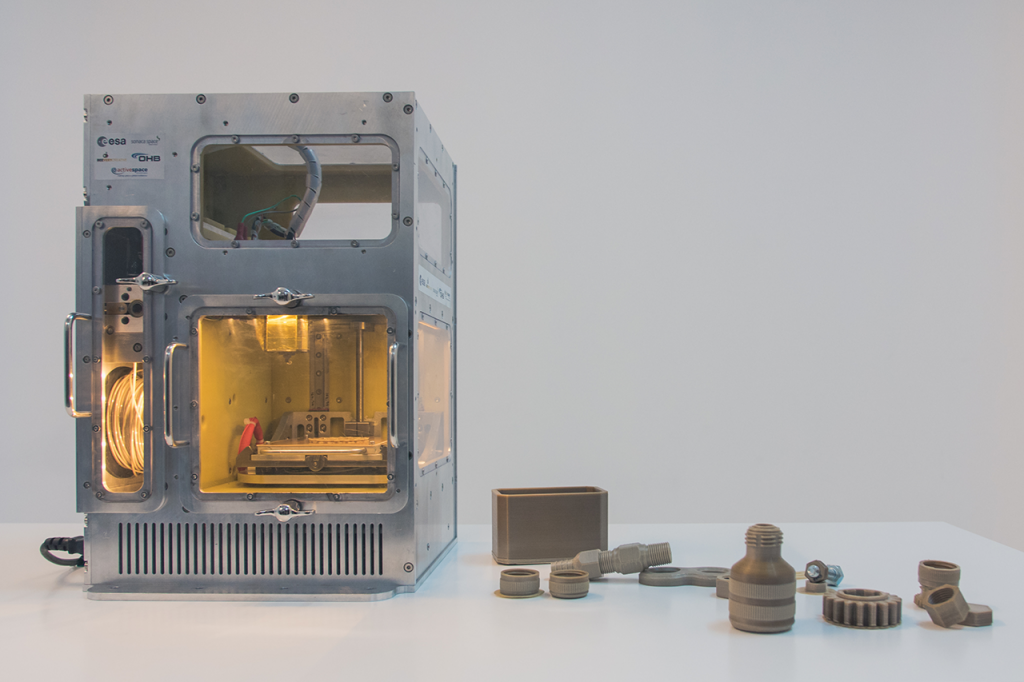The European Space Agency (ESA) has made new advances in its quest to 3D print in space using in-situ materials.
In a partnership with Austrian ceramic 3D printing specialist Lithoz, ESA has demonstrated the ability to produce highly detailed spare parts, like screws and gears, from a lunar regolith simulant.
Dr. Advenit Makaya, ESA Advanced Manufacturing Engineer in Materials and Processes, tells 3D Printing Industry what this latest development means for the agency’s wider pursuit of low-gravity fabrication.

One small step for 3D printers…
As discussed in a previous interview with Dr. Makaya, ESA is currently in the midst of an In-situ Resource Utilisation (ISRU) project, which involves the investigation of different 3D printing methods using materials native to space, i.e. lunar and martian regolith, as a sustainable feedstock. By doing so, ESA aims to reduce the high cost of sending consumables into space; make deeper exploration possible; and prepare its astronauts with a means of producing anything they require on board stations like the ISS.
Starting small, the agency has already succeeded in 3D printing miniature habitat concept models using an extrusion-based technology.
With Lithoz, ESA has now added lithography-based ceramic manufacturing (LCM) to its regolith fabrication portfolio. The work was undertaken for a particular activity titled, “Conceiving a Lunar Base Using 3D Printing Technologies,” part of the ESA supported URBAN Consortium comprising COMEX, LIQUIFER Systems Group, SONACA Space GmbH and OHB System AG.
“We are therefore interested in mapping and understanding the use of a wide range of additive technologies, to address the manufacturing of every possible items needed for a lunar base, at all scales,” says Dr. Makaya explains, “From the construction infrastructure, to tooling, furniture, clothing and even food.”
The challenges of raw regolith
The key challenge of the Lithoz/ESA Lunar Base collaboration was to prove that Lithoz’s LCM 3D printing technology works with raw regolith simulant material, rather than other, already proven, conventional ceramics. “The regolith simulant was processed by crunching and sieving it to the right particle size, but the composition and mineralogy of the simulant were left as they are,”
“This means that the feedstock does not have a specific composition (i.e. it is not made of a specific type of oxide or nitride), like the ceramics that Lithoz is used to processing and for which they have an established “recipe.” Instead, the regolith simulant is made of a mixture of various minerals.”
The unusual mixture of regolith simulant made the tuning process altogether more complicated. Dr. Makaya adds, “The challenge was to achieve the same level of density and accuracy for this “raw” regolith, compared to what Lithoz can achieve with “conventional” ceramics.
Ceramics make critical parts
Sample parts made using Lithoz LCM are presently no larger than a 5 cent Euro coin, and consist of screws, nuts and bolts that the space crew could use for fixing parts and building new devices. These ceramic fasteners, accordingly, are best suited “for applications where the parts need to withstand very high temperatures, high pressures, corrosive or abrasive environments or where they need to be electrically nonconductive or nonmagnetic.” Basically, Dr. Makaya explains: “All requirements that metals cannot easily cope with,”
“In the context of the lunar base the main driver for producing ceramic parts. is the large abundance of the regolith material. Not all additive manufacturing technologies will be adapted to all usages. But sintered ceramic parts with high accuracies and complicated shapes – i.e. the type of parts that 3D printing of regolith can produce – have a role to play in the overall maintenance strategy […]”
In order to produce the parts, regolith powder had to be combined with a light reactive binder. After printing, the parts were then sintered to produce a strong solid.
“The particular technology of lithographic ceramic manufacturing, thanks to its ability to produce very fine details on objects made of regolith, appears very suited to building items where high precision and good dimensional accuracy are needed,” Dr. Makaya concludes.
“Having a way to manufacture spare parts locally, using the abundant regolith resource appears highly attractive, compared to having to source these parts from Earth. We are talking about very small elements, but with potentially a critical function if they are part of a key equipment or instrument.”
3D printers in space
At present, vat polymerization techniques have not yet proven to 3D print in low-gravity conditions, though the potential of project could warrant the development of such systems in the future.
So far, American microgravity fabrication specialist Made In Space has installed the FFF-based Additive Manufacturing Facility (AMF) aboard the ISS and succeeded in producing small tools and components.
Next, under Project MELT, ESA is planning to use high temperature FFF 3D printer to make parts for the ISS, and Made In Space has been cleared to develop a metal system for microgravity conditions.

For exclusive interviews and news subscribe to the 3D Printing Industry newsletter, follow us on Twitter and like us on Facebook. Join 3D Printing Jobs now to search for the next step in your academic career.
Featured image shows Dr. Advenit Makaya, ESA Advanced Manufacturing Engineer in Materials and Processes. Photo by Clara Cruz/ESA


